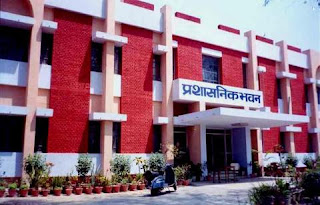The restored 1966 NASA image of Earth rising behind the Moon
The 1966 NASA image of the moon and the restored version


Captain Portal- Free classified ads, Search Engine Optimization, Business, Finance Portal, Education portal, Travel, Real estate, Jobs portal, Funny jokes SMS, Current Headlines breaking News portal SEO SEM SMO Articles




 History
History
Kamla Nehru Institute of Technology (KNIT), is a prominent state government funded engineering college in Uttar Pradesh Affiliated to UPTech University Lucknow(UP).
Kamla Nehru Institute of Technology (KNIT), Sultanpur is a prominent state government funded engineering college in Uttar Pradesh. KNIT was Initially Established as the Faculty of Technology in Kamla Nehru Institute of Science and Technology, Sultanpur in the year 1976 by Kamla Nehru Memorial Trust. It was taken over by the govt. of Uttar Pradesh in 1979 with a view to develop a full-fledged engineering institute in the Eastern UP region better known as the Awadh region. Later, in the year 1983 it was registered as a separate society and renamed as the Kamla Nehru Institute Of Technology.
The Institute is one of the leading technical institutions of the region and is responsible for producing top-grade engineers with skill sets comparable with the best in the world. Being fully aware of its social responsibilities and the addressing the issue of application of technology to industry, it also renders the testing and consultancy services to the neighbouring industries and various other agencies. The institute is presently affiliated to U.P Technical University , Lucknow.
Courses Offered
The Institute offers following courses:
Under-Graduate Programs: B.Tech (4 years - 8 semesters)
1: Civil Engineering
2: Computer Science
3: Electrical Engineering
4: Electronics Engineering
5: Information Technology
6: Mechanical Engineering
Master of Computer Applications (MCA) (3 years - 6 semesters)
Started in 1988 with intake of 60
Full-time Post Graduate (M.Tech)
Programme in Power Electronics & Drive under Electrical Engineering Department
Part - Time (M.Tech) Programme (5 Semesters) Course
1: Civil Engineering (Water Resources Engineering /Geotechnical Engineering)
2: Electrical Engineering (Solid State Control / Power System)
3: Mechanical Engineering (Machine Design / Industrial System Engineering)
4: Electronics Engineering (Digital Electronics & Systems )
Doctoral Programme: Ph.D.
1: Civil Engineering
2: Computer Sc. & Engineering
3: Electrical Engineering
4: Electronics Engineering
5: Applied Mathematics
6: Applied Physics
7: Applied Chemistry
8: Humanities
Administration Block 



Central Library of KNIT

KNIT Hostel











 With Yahoo! oneSearch™ with voice, it’s fast and easy to search for anything you need when you’re mobile. Just speak into your phone and get relevant and accurate results from Yahoo! oneSearch, an industry leading mobile search product. Now, mobile search that practically reads your mind also listens to what you have to say.
With Yahoo! oneSearch™ with voice, it’s fast and easy to search for anything you need when you’re mobile. Just speak into your phone and get relevant and accurate results from Yahoo! oneSearch, an industry leading mobile search product. Now, mobile search that practically reads your mind also listens to what you have to say.
दिल-ए-नादाँ तुझे हुआ क्या है आख़िर इस दर्द की दवा क्या है हम हैं मुश्ताक़ और वो बे-ज़ार या इलाही ये माजरा क्या है मैं भी मुँह में ज़बान रखत...